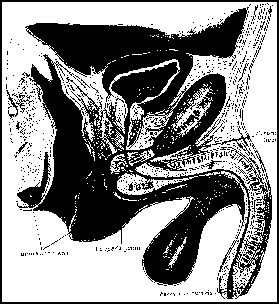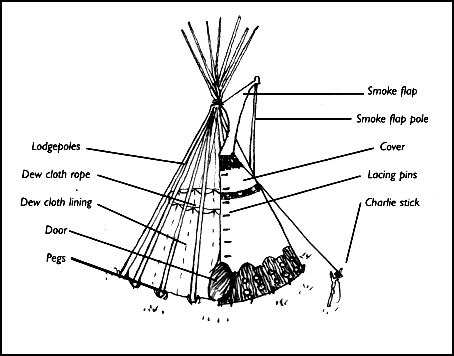A Great Terror
Jean Stengers,
Anne Van Neck
Kathryn Hoffmann,
Translator
(St. Martins)

The original It's-a- Onania, or the heinous sin of self-pollution, and all its frightful consequences in both sexes considered, with spiritual and physical advice to those who have already injured themselves by this abominable practice.
Tissot's work, much expanded, stayed in print for over seventy-five years, with editions in English, Dutch, German, and Italian. The booklet included case studies, such as this story of a young watch-maker who just couldn't control himself: I went to his home; what I found was less a living being than a cadaver lying on straw, thin, pale, exuding a loathsome stench, almost incapable of movement. A pale and watery blood often dripped from his nose, he drooled continually... The 19th Century wasn't much better. A Professor O. S. Fowler wrote of it as "the sin of sins," Pile all other evils together --- drunkenness upon all cheateries, swindlings, robberies, and murders; and tobacco upon both, for it is the greater scourge; and all sickness, diseases and pestilence upon all....and all combined cause not a tithe as much human deterioration and misery as does this secret sin... It is not until the 20th Century that this nonsense begins to fade. The change came about through a study --- a very stolid study--- one section of a thick and solemn book, put out by an Indiana University Professor in 1948, called Sexual Behavior in the Human Male. "92 percent of the total population is involved in masturbation which leads to orgasm...In the present study we have examined the histories of 5,300 males, of which about 5,100 record experience in masturbation," wrote the author, Dr. Kinsey. The authors' comment: From this new perspective, the abnormality ceased to be masturbation and became the absence of masturbation. A French study from 1970 gave the figure of 90 percent for boys versus 25 percent for girls. Masturbation is a solemn review of the literature of the centuries. Unfortunately, if you will pardon the expression, the book has the feel of beating a dead horse. One can only cite too many lurid condemnations from past years without having a certain repetition set in. We have here 180 pages of text and almost 50 pages of notes. It's a solid work, but it has the feel of a bad love novel: we know the philanderer, in the end, will just be shown to be another stupid squirt.
At Large
In the Thirties and Forties
Jerre Mangione
(Syracuse)
He joined the Roosevelt administration, first as a part of the WPA Writer's Project, and then, with the coming of WWII, as public relations official for the Immigration and Naturalization Service, to explain to Americans (and to the world) the internment of aliens that took place in this country at the beginning of the war.
Mangione was fortunate to be in the midst of such earth-shaking events of the 30s and 40s, and his tale of the artists and radicals in Greenwich Village, and the sudden shift (in our world, in his life) during WWII is not without interest. He knew the movers and the shakers, not only in the artistic and radical maelstrom of New York City, but many of the leading players in the FDR administration. Indeed, the book ends with a final meal he had at the White House with Eleanor Roosevelt, and the death, at Warm Springs, of FDR himself.
Unfortunately Mangione seems primarily intent on building his reputation as an Important Figure of the times, rather than as historian, or a simple spinner of interesting tales. He has the style of one who has spent too much of his life in public relations, and I suspect this gets in the way of the fascinating tale that he could be telling. Thus, despite telling us repeatedly about his accomplishments --- along with a myriad of footnotes referring us back to the many books that he has published --- we are left with some uneasiness about his style and, worse, his character.
 There is the paradox of why a man, presumably a good man --- good enough in his radical youth to want to change the inequalities he saw all about him --- ended up being an apologist for one of the most repressive of U. S. government administrative decisions. That is, to set up internment camps, camps that took 110,000 Japanese, Germans, Italians, and other so-called aliens from their families and stuck them away in a godforsaken locations out in the boonies --- said imprisonment based merely on parentage.
There is the paradox of why a man, presumably a good man --- good enough in his radical youth to want to change the inequalities he saw all about him --- ended up being an apologist for one of the most repressive of U. S. government administrative decisions. That is, to set up internment camps, camps that took 110,000 Japanese, Germans, Italians, and other so-called aliens from their families and stuck them away in a godforsaken locations out in the boonies --- said imprisonment based merely on parentage.
No amount of apology and "I-didn't- Mangione dedicates extended pages to describing intimate dinners with the Roosevelts --- but what he has to report often trivializes those events. Descriptions of Henry Morgenthau's "long-thin nose" and Eric Biddle's untied shoelaces are not what we are seeking for one who was privy to those important goings-on in the Executive Mansion. If one is researching the Village in the 20s or the WPA Writer's Project in the 30s or the Internment Camps of the 40s, these memoirs should be set somewhere down near the bottom of the list as resource material. Too much of it has the feel of the filler that they use in Sicilian sausages to cut the spiciness, reduce the economic outlay, and assure a fat profit for the butcher.
Houses
And Benders
David Pearson
(Chelsea Green)

The yurt seems to be the most complex, requiring lattice walls, roof pole and a real door. Traditionally, they have been covered with a heavy, often highly decorated felt, but one of the seventeen contributors to Circle Houses --- Jane Taka --- reports that
everything that walked, nibbled and flew wanted to eat or steal the felt for nesting.
They now use canvas.
Tipis were traditionally covered with bark sheets or reed mats, and could reach a diameter of 100 feet. The author calls them "the most ingenious conical tent ever devised," and tells us that it is not a true circle, but egg-shaped --- the wider part towards the rear.
The cone also tilts backwards with its steeper rear side braced against the prevailing westerly winds...the door always facing east toward the morning sun and away from the prevailing winds.
This volume is a how-to- fat ends 1-2 in. (3-5 cm) of coppiced hazel poles... The last few pages contain exact directions for building yurts, tipis and benders, and there's a page of reference material --- three places that sell tipis, fourteen that make, sell, or rent yurts (there is even a "Yurt Foundation ") and four for benders. The names and addresses show some bias towards the U. K., and some are so vague as to be useless ("Beneficio --- the exact location is not publicised. Go to southern Spain and ask a fellow-traveller for directions.") There are, of course, other round houses that aren't covered here. Buckminister Fuller designed a powerfully ugly one of plastic and hexagonal metal struts; in Africa there are grass-covered huts; and in Central and South America the palapa is still commonly being constructed and can either be square, rectangle, or round. I lived in one of these for a year and grew to be quite fond of the wind rustling the palm fronds until I discovered that gentle rustling noise was more often made by snakes chasing rats around the upper stories, which in turn would cause tarantulas, scorpions or six-foot beetles to drop down on my face, scare me to death and put sleep furtherest from my mind. Such is life in the wild for us circle house dwellers